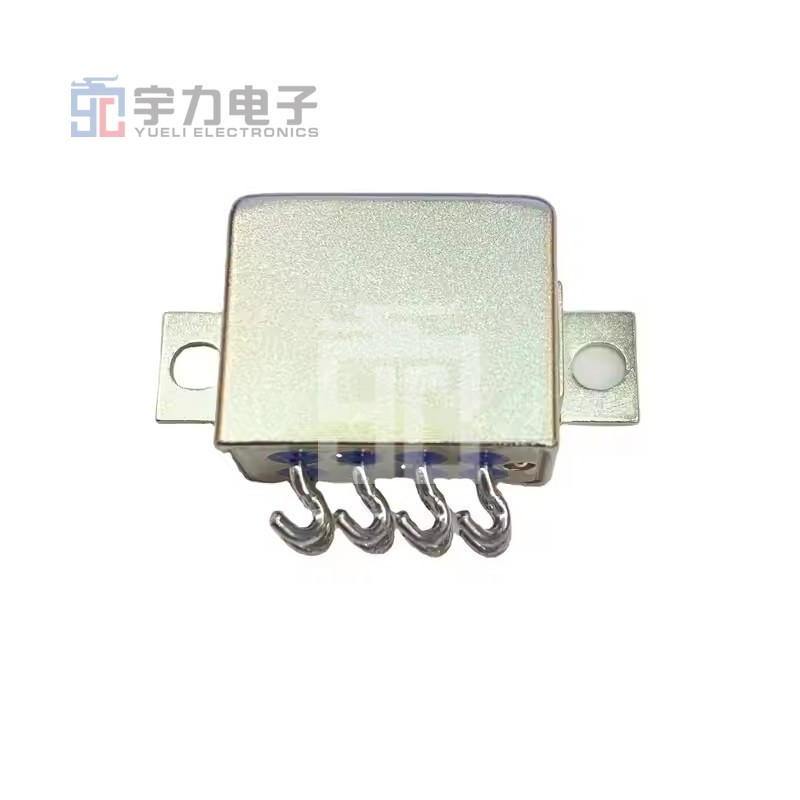Understanding Signal Relays: Key Components in Electronic Systems
2025-07-01

Signal relays play a crucial role in various electronic applications, acting as switches that open or close circuits in response to input signals. Typically used in control systems, signal relays help manage low-voltage signals and can control higher voltage circuits safely, making them indispensable in many industries, including automotive, telecommunications, and industrial automation.
One of the primary functions of signal relays is to isolate different parts of a circuit. This isolation prevents high voltage or current in one part of the system from affecting other components, thereby enhancing safety and reliability. For instance, in automated systems, a signal relay can be used to control motors or other high-power devices from a low-power control circuit. This ensures that operators can manage equipment safely without direct exposure to hazardous voltages.
Signal relays come in various types, each designed for specific applications. Electromechanical relays are popular due to their reliability and versatility. They operate using an electromagnetic coil to open or close mechanical contacts, providing a robust solution for switching applications. Solid-state relays, on the other hand, use semiconductor devices to perform the switching without mechanical movement, offering faster switching speeds and longer lifespans, ideal for high-frequency applications.
In addition to their basic functions, signal relays can also be equipped with features such as multiple contacts, enabling them to control multiple circuits simultaneously. This capability is particularly useful in complex systems where multiple signals must be managed efficiently. Furthermore, some signal relays include diagnostic features, providing feedback about their status, which can assist in troubleshooting and maintenance.
Applications of signal relays are diverse and widespread. In automotive systems, for instance, they control lighting, power windows, and other electronic features. In telecommunications, they are used to manage data signaling and routing within networks. In industrial automation, signal relays are critical for controlling machinery and ensuring precise operation within manufacturing processes.
In summary, signal relays are vital components that facilitate the management and control of electrical signals in various applications. Understanding their functions, types, and applications can significantly enhance the design and operation of electronic systems. Whether you're working in automotive technology, telecommunications, or industrial automation, incorporating signal relays into your projects can improve performance and safety, making them an essential consideration in electronic design and engineering.
One of the primary functions of signal relays is to isolate different parts of a circuit. This isolation prevents high voltage or current in one part of the system from affecting other components, thereby enhancing safety and reliability. For instance, in automated systems, a signal relay can be used to control motors or other high-power devices from a low-power control circuit. This ensures that operators can manage equipment safely without direct exposure to hazardous voltages.
Signal relays come in various types, each designed for specific applications. Electromechanical relays are popular due to their reliability and versatility. They operate using an electromagnetic coil to open or close mechanical contacts, providing a robust solution for switching applications. Solid-state relays, on the other hand, use semiconductor devices to perform the switching without mechanical movement, offering faster switching speeds and longer lifespans, ideal for high-frequency applications.
In addition to their basic functions, signal relays can also be equipped with features such as multiple contacts, enabling them to control multiple circuits simultaneously. This capability is particularly useful in complex systems where multiple signals must be managed efficiently. Furthermore, some signal relays include diagnostic features, providing feedback about their status, which can assist in troubleshooting and maintenance.
Applications of signal relays are diverse and widespread. In automotive systems, for instance, they control lighting, power windows, and other electronic features. In telecommunications, they are used to manage data signaling and routing within networks. In industrial automation, signal relays are critical for controlling machinery and ensuring precise operation within manufacturing processes.
In summary, signal relays are vital components that facilitate the management and control of electrical signals in various applications. Understanding their functions, types, and applications can significantly enhance the design and operation of electronic systems. Whether you're working in automotive technology, telecommunications, or industrial automation, incorporating signal relays into your projects can improve performance and safety, making them an essential consideration in electronic design and engineering.
Previous:


